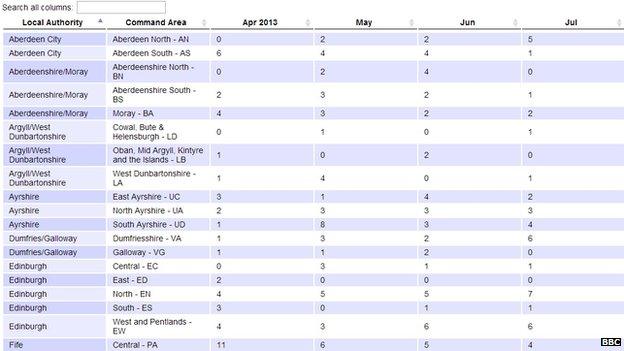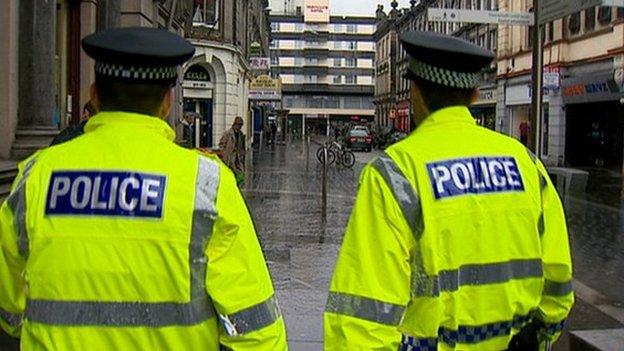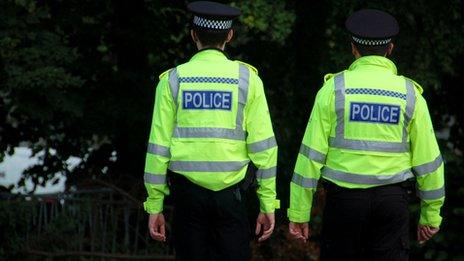Figures reveal Scottish rape report locations
- Published

Police Scotland data revealed nearly 2,000 rapes were reported between April 2013 and May 2014
More rapes have been reported in West Fife than any other area in Scotland between April 2013 and May this year, according to data obtained by BBC Scotland.
The figures from Police Scotland reveal that the command area - which includes Dunfermline and Cowdenbeath - received 102 reports over the 14-month period.
The Fife Council area received the same number of reports (222) as Glasgow.
Its population is two-thirds the size of Scotland's largest city.
Nearly 2,000 rapes were reported to Police Scotland between April 2013 and May 2014.
You can explore the data for your own Police Scotland command area using the SEARCHABLE DATABASE, external developed by BBC Scotland.

BBC Scotland has created an online database of the rape report data for readers to search
These new figures come in the wake of a police report last month which acknowledged that reports of rape were on the rise across its national divisions.
In the first full year of Scotland's single police force, the number of alleged rapes being reported to the authorities increased by more than a fifth to almost 1,700 while the level of sexual crimes recorded rose by 11.8%.
But the data released to BBC Scotland under Freedom of Information legislation further breaks down these divisional reports by police command area, external and month.
While West Fife topped the list, police in the command areas of West Lothian (92), Dundee (87), Glasgow South-East (74), Perth and Kinross (69), and Central Fife (69) also received a high number of reports.
The single largest number of incidents (23) was reported in West Fife in August 2013.
The data released to BBC Scotland also reveals peaks in incidents of rape reported nationally in November 2013 (154) and January 2014 (158). The monthly average over the 14-month period was 142.
But Det Supt Louise Raphael, the head of Police Scotland's new National Rape Task Force, external, warned that these figures should be treated with caution.
"This data shows when crimes were reported to us, and not necessarily when they were committed," she said.
Det Supt Raphael said the data could include multiple crimes reported by a single person - crimes which may have occurred over a long period of time.
"We also know that about 36% of rapes reported to us were historic in nature - crimes that were a year or more old," she added.
"That figure increases to nearly 50% for crimes reported up to three months after they actually occurred."
Det Supt Raphael said that, coupled with the fact that only 19% of rapes against adults are reported, the task force has found it challenging to pinpoint geographical or seasonal trends in attacks.
"We want to see more reporting to the police because if we don't have that then we can't properly understand the nature of the crime and the causal factors.
"So we anticipate seeing an increase in the number and not necessarily a decrease."
She added that the introduction of risk assessment questionnaires for those suffering domestic abuse had encouraged many victims to come forward.
Sandy Brindley, national coordinator of Rape Crisis Scotland, said court was "a big deterrent to many people who are scared, feel they can't go through with it, and who may not have confidence in the system".
But she lauded Police Scotland for adapting a number of significant measures to boost public confidence.
In addition to a recent awareness campaign, Police Scotland also unveiled a new scheme last week that would see men suspected of sex crimes issued with police warnings.
It is hoped the Persons of Interest scheme would frighten sexual predators into changing their behaviour if they thought the authorities were on their trail.
- Published19 July 2014

- Published19 June 2014

- Published10 March 2014
